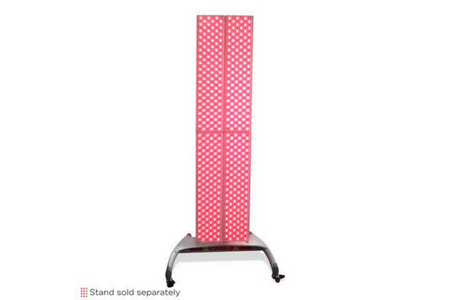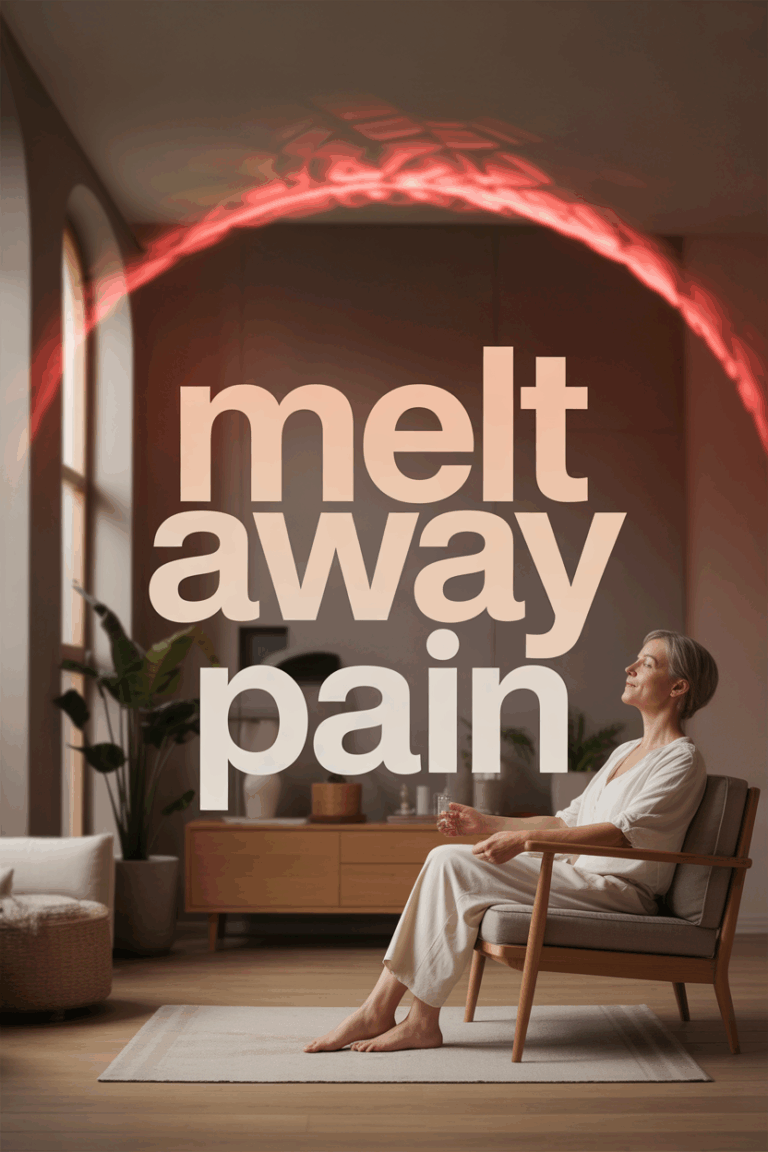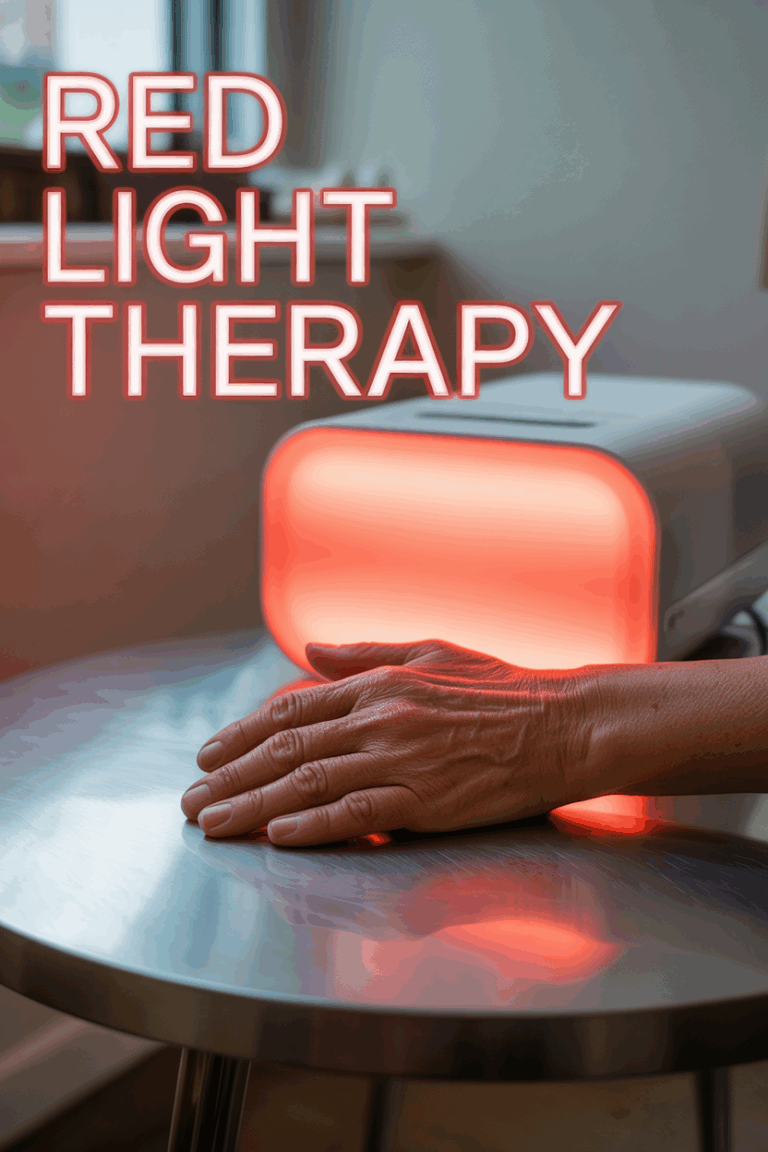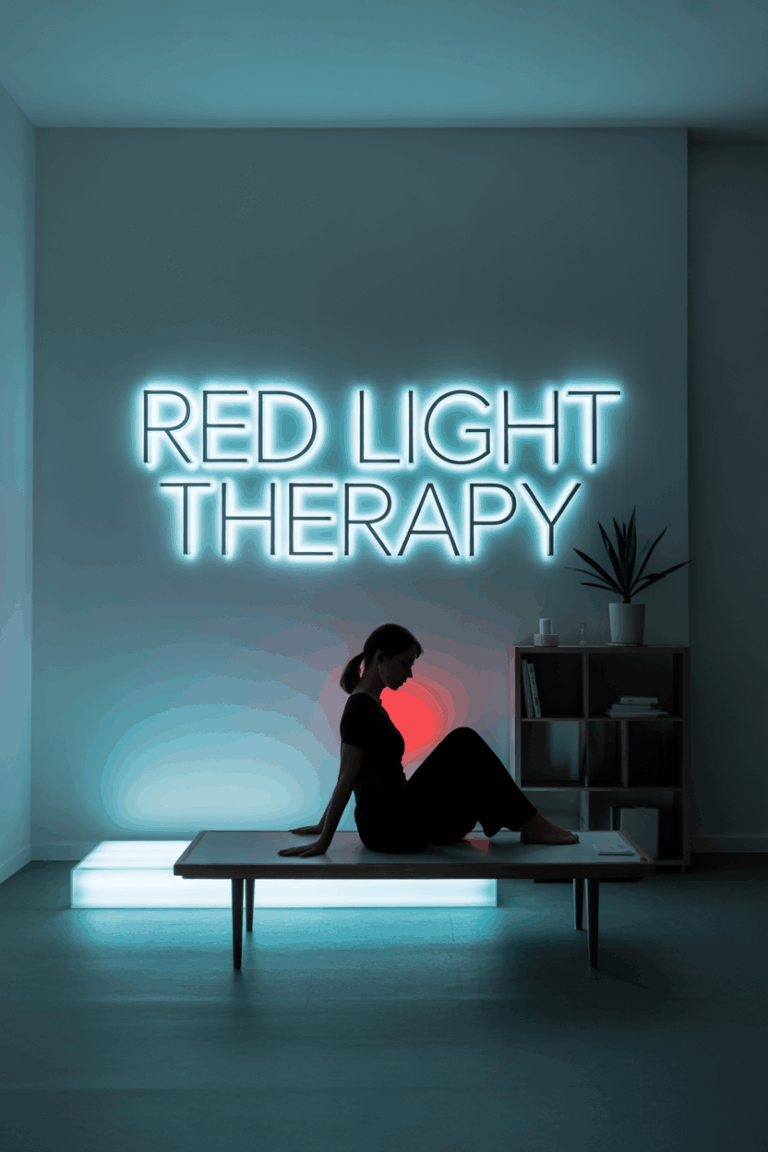How Does Red Light Therapy Work? Mitochondria Power

The Science-Backed Secret: How Red Light Energizes Your Cells

If you’re asking, “How does red light therapy work?” you’re not alone. Red light therapy is soaring in popularity, and as a relatively new wellness tool for home use, it’s natural to have questions.
Did you know that red light therapy can clear acne, reduce wrinkles, and ease pain? You can do it all with a device you can use safely at home without a doctor’s prescription.
Red light therapy, also known as photobiomodulation (PBM), uses specific, targeted wavelengths of light to spark a healing response deep within your body.
For this therapy to work, molecules inside your cell’s mitochondria called chromophores must absorb the light. It’s a basic principle of photobiology: for light to have an effect, it must first be absorbed.
When these chromophores absorb red and near-infrared light, they kick off a powerful chain reaction. This process awakens your body’s natural healing abilities, helping to restore and refresh you from the inside out.
The main result is an increase in ATP (adenosine triphosphate), the primary energy source for your body’s cells. This energy boost fuels a wide range of helpful responses in muscles, nerves, skin cells, and many other tissues, promoting overall health and vitality.
What Exactly is Photobiomodulation (PBM)?

Dr. Michael Hamblin, a leading researcher from institutions like Harvard and MIT, is a key figure in explaining how red light therapy works. His work points to the “mitochondrial redox signaling” hypothesis as the main reason it’s so effective.
Two main ideas explain how PBM works on a cellular level. The most widely accepted theory focuses on how light works with mitochondria, your cellular powerhouses.
This theory suggests that a component in the mitochondria called cytochrome C oxidase (CCO) absorbs the light. This absorption causes nitric oxide to detach, which in turn boosts the mitochondria’s energy production.
A second idea proposes that PBM may also activate ion channels in cells through a light or heat-based pathway. However, most research continues to focus on red light’s powerful impact on mitochondrial function.
“Photobiomodulation (PBM) involves the use of red or near infrared light at low power densities to produce a beneficial effect on cells or tissues. PBM therapy is used to reduce pain, inflammation, edema, and to regenerate damaged tissues such as wounds, bones, and tendons.”
– Dr. Michael R. Hamblin
From Clinical Lasers to At-Home LEDs: The Growth of Light Therapy

For a long time, this field was called “laser medicine.” That term became outdated when researchers discovered they could get the same healing results with non-laser lights, like light-emitting diodes (LEDs).
Initially, it was called “low-level laser therapy” (LLLT), but this created confusion since LEDs are not lasers. To make things clearer, scientists officially adopted the term Photobiomodulation (PBM) in 2016. “Photo” means light, “bio” means life, and “modulation” means to change—a perfect way to describe using light to change our biology.
For years, getting these powerful results meant visiting a clinic with medical-grade lasers, which were not safe for home use. The arrival of modern LED technology was a pivotal moment for at-home wellness.
A key NASA study from 2000 confirmed that LEDs were highly effective for wound healing. This research opened the door for developing safe, affordable, and effective at-home LED devices, bringing this therapy to everyone.
Laser vs. LED: What’s Best for Your At-Home Wellness?
Both lasers and LEDs are clinically proven to be effective for photobiomodulation. The main difference is in their power, safety, and how they are used.
Lasers are highly concentrated and powerful, which allows them to deliver a therapeutic dose of light very quickly. This makes them ideal for professionals in a clinic. However, their intensity carries a risk of burns, making them unsafe for at-home use without supervision.
LED devices are less powerful and take longer to deliver the same therapeutic dose. This lower intensity makes them much safer and cooler to the touch.
Studies confirm that LEDs are just as effective as lasers when used correctly and consistently. Their excellent safety profile makes them the perfect choice for adding red light therapy to your personal wellness routine at home.

The “Goldilocks” Effect: Why Dosage is Key for Success
The success of red light therapy depends on a principle called the “biphasic dose-response.” Think of it as a “Goldilocks” therapy—for the best results, the dose of light must be just right.
This principle follows the Arndt-Schulz Law, which states that there is a sweet spot, or “therapeutic window,” for effectiveness.
If you use too little light energy, you won’t get a noticeable effect. Your cells simply won’t receive enough stimulation to start the healing process.
On the other hand, if you use too much energy, the therapy can become ineffective or even work against you. Over-stimulating the cells can cancel out the benefits and lead to disappointing results.
Finding that perfect dose is essential. This is why following the manufacturer’s guidelines for your specific device is so important for achieving the health and wellness results you want.
Is Red Light Therapy Safe? A Look at the Evidence

Red light therapy is widely considered safe, with an outstanding safety profile backed by thousands of clinical studies. Leading PBM researcher Dr. Vladimir Heiskanen has collected a database of over 9,000 papers where reports of side effects are exceptionally rare.
While true side effects are minimal, some new users might notice mild, temporary effects. These can include skin redness, tightness, or a slight headache, which typically go away on their own very quickly.
The safety of red light therapy is far better than that of many common over-the-counter drugs. For instance, acetaminophen (Tylenol) comes with risks of rash, swelling, and breathing issues, while non-invasive light therapy does not pose such risks.
Red light therapy does not contain harmful UV light, and it won’t burn or damage your skin. For most people, it is a very low-risk therapy with a high potential for reward.
How Can One Therapy Help So Many Issues? The Miracle of Mitochondria

The secret to red light’s wide-ranging benefits is how it works on the mitochondria. These tiny energy factories exist in almost every cell in your body. When you improve their function, you can create a positive ripple effect on your overall health.
When the right kind of light reaches your cells, it awakens these energy factories. This energy boost leads to better blood flow, more efficient waste removal, and a fresh supply of power for self-healing and renewal.
This process delivers vital blood, oxygen, and nutrients to damaged areas, allowing them to repair more efficiently.
Beyond simple energy production, light therapy also stimulates the body’s own messaging systems. As one comprehensive scientific review explains, these messengers can influence DNA and gene expression, essentially telling the body to create the building blocks of life.
This chain of events helps reduce inflammation, prevent early cell death, and activate the body’s own antioxidant defenses to protect against damage.
A Harmonious Stress: How Red Light Therapy Manages Oxidative Stress
One of the most fascinating parts of photobiomodulation is how it cleverly manages cellular stress. PBM briefly increases reactive oxygen species (ROS), often known as free radicals.
However, unlike other stressors, red light therapy also prompts the body’s natural antioxidant defenses at the same time. The energy boost from the light gives your cells the fuel they need to handle this temporary increase in ROS.
In this way, red light uses ROS as signaling molecules to trigger a healing and regenerative response, all without causing lasting damage from oxidative stress.
This is a key difference from other types of light, such as blue light, which can create ROS without also providing the antioxidant response to balance it out.
A Spectrum of Wellness: Broad Benefits of Red Light Therapy

The potential improvements from red light therapy are vast and supported by a growing body of scientific research from respected institutions like Stanford Medicine. This therapy offers a holistic approach to wellness by improving cellular function across the entire body.
Potential benefits include:
- Skin Health: Reduced acne, psoriasis, and eczema; skin rejuvenation, fewer fine lines and wrinkles; and smoother skin texture.
- Hair Growth: Stimulating follicles for increased hair count and density.
- Pain & Inflammation: Relief from joint pain, muscle soreness, and inflammatory conditions.
- Wound Healing: Faster recovery from injuries and surgeries.
- Body Contouring: Aiding in fat loss from targeted areas.
- Vision: Improving contrast sensitivity in aging eyes.
- Cognitive & Brain Health: New research shows potential for improving symptoms of brain injury and dementia.
What was once only available in clinics is now accessible for you to do red light therapy at home. Studies show that with consistent use, the benefits can last for months or even years, making it a valuable long-term wellness tool.
How Does Red Light Boost Skin and Hair Health?

While blue light is often used for fighting acne, red light plays a crucial role by reducing inflammation and promoting skin healing. In one study, patients treated with red light saw their acne blemish count fall by 51% after eight weeks. (source)
Another study showed that patients receiving red light twice a week experienced a significant reduction in acne lesions. (source)
For hair health, red light therapy can stimulate dormant hair follicles, encouraging them to enter the growth phase. One study found that daily treatments for 24 weeks led to a significant increase in hair thickness and density. (source)
In another compelling study on women with hair loss, those treated with 655 nm light every other day for 16 weeks grew an incredible 37% more hair than the untreated group. (source)
Targeted Relief: Red Light for Pain, Fat Loss, and Eye Health

Red light therapy is an effective, drug-free option for pain management. One study on pain after surgery found that 76% of patients who received red light therapy reported at least 30% less pain and needed less pain medication. (source)
Red light can even help reduce fat. Studies show it prompts fat cells to create temporary pores and release their contents. For this to be effective, you must exercise right after treatment to help your lymphatic system flush out the released fats.
One study saw participants lose an average of 1.4 inches from their arm circumference after just two weeks of targeted treatments. (source)
Perhaps most surprisingly, red light therapy can support eye health. Researchers found that treating the eyes of subjects over 40 with 670 nm red light made a remarkable difference, helping them regain a significant portion of their ability to distinguish colors. (source)
Your Path to Cellular Wellness Starts Here
Red light therapy uses specific, clinically-proven wavelengths of light to gently stimulate healing and wellness at a cellular level. It is not a magic bullet, but a scientifically-backed tool that empowers your body’s natural processes.
Thousands of studies confirm its diverse benefits for skin health, pain relief, hair growth, and more. Once restricted to clinics with powerful lasers, this restorative therapy is now available to everyone through safe, effective at-home LED devices.
The power of red light comes from its unique ability to improve mitochondrial function. By boosting cellular energy, it helps increase blood flow, reduce inflammation, and give your tissues the fuel they need to repair and regenerate.
This fundamental process is why one therapy can have such a wide range of positive effects, from clearing your skin to soothing sore muscles.
Proven to be remarkably safe and easy to use, red light therapy offers a natural, non-invasive way to enhance your body’s own healing capabilities. It is a powerful addition to a wellness-focused lifestyle for anyone seeking to improve their health from the inside out.






